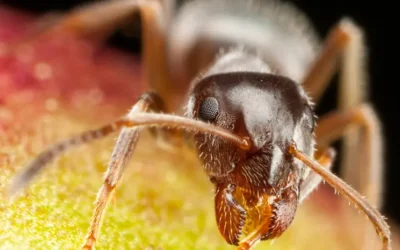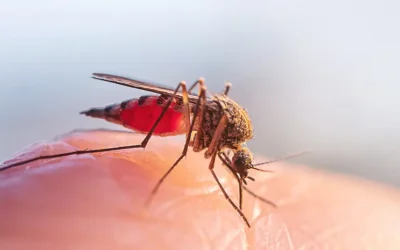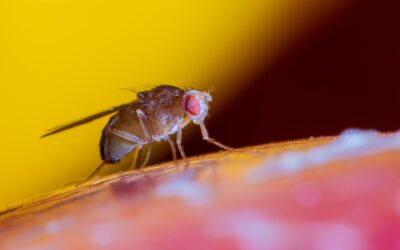That persistent buzzing that can test the patience of even the calmest person? Flies often seem to annoy us simply on purpose. Sounds familiar?
And while we usually think of them as nothing more than irritating roommates, the truth is far more serious: these seemingly harmless insects can pose a real threat to human health.
Meet the housefly
The housefly (Musca domestica) is one of the most common insects in the world. All it takes is an open window, and there’s a good chance it will drop by uninvited. An adult fly measures about 6–7 mm in length, with a characteristic gray body and transparent wings that allow it to fly at speed of several kilometers per hour. Interestingly, it can take off in any direction — that is why it’s so hard to catch. Its life cycle is extremely fast — from egg to adult in just 7–10 days. That’s why flies can quickly overrun your kitchen once they find the right conditions.
Repulsive – or even dangerous?
Flies don’t bite like mosquitoes or sting like wasps, but they do something much worse – they spread germs and disease-causing microorganisms.
- They can carry dozens of different bacteria and parasites on their legs and bodies.
- They love to visit garbage bins, animal waste, food scraps, and rotting fruit – and from there, they end up right on your table.
- They can spread Salmonella, E. coli, and bacteria that cause dysentery and tuberculosis.
In short: if a fly is buzzing around the food you are just about to taste, it’s best not to ignore it.
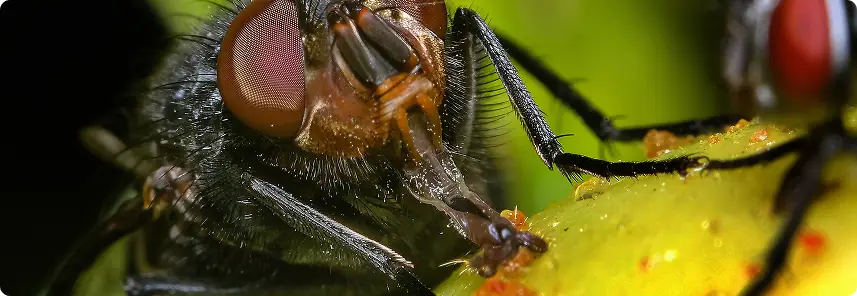
Houseflies: Facts and Curiosities
- Super-fast reproduction – a single female can lay up to 500 eggs in her lifetime.
- Short but intense career – an adult fly lives for about a month, yet can easily ruin plenty of pleasant moments during that time.
- Peak activity? Warm, humid days – that’s why summer and early autumn are their favorite seasons to visit.
- Incredible vision – a fly’s eye is made up of about 4,000 tiny lenses (ommatidia), allowing it to detect the slightest movement and react in a split second!
How to get rid of houseflies?
Here are some proven methods that really work:
- Cleanliness first – tget rid of the trash quickly and keep it sealed, cover food, and don’t leave leftovers on countertops.
- Window screens and nets – simple but effective barriers that keep uninvited guests out, especially if you like to keep windows open.
- Natural repellents – flies hate the scent of lavender, mint, cloves, or basil. A pot of herbs on the windowsill is both a decoration and a natural shield.
- Fly traps – safe for humans and pets, yet effective at reducing fly populations in the home or garden.
- Onion or garlic – their strong smell drives flies away (though your household members might not be happy either).
- Sugar and milk – an old “grandma’s trick”: boil milk with sugar and pepper, then pour it into a bowl. Flies are drawn to it, and the mixture acts like a sticky trap.
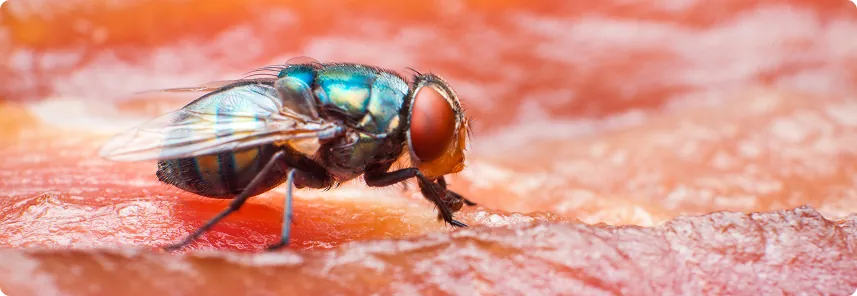
The housefly and its cousins.
While the common housefly is usually the main kitchen nuisance, the world of flies is far more diverse.
- Blowfly – the one with a metallic green or blue sheen, most often found where it really shouldn’t be – around garbage bins and carrion.
- Horsefly – larger, louder, and truly troublesome, as it can painfully bite both livestock and humans.
- Fruit fly – a tiny kitchen cousin that loves ripening fruit and sweet drinks – harmless, but very annoying.
As it turns out, “fly” doesn’t refer to just one species – it’s a whole family of insects that, despite their small size, can make life truly unpleasant for humans.
A Fly – a small insect, a big problem
Though the housefly might look harmless (or simply just disgusting), it should never be underestimated. Besides the irritating buzzing and landing on your food, flies are carriers of bacteria and viruses that can pose real health risks.
They can carry dozens of bacteria and parasites on their legs and bodies. They love to visit trash bins, animal waste, food scraps, and rotting fruit – and from there, they go straight to your table. They can spread Salmonella, E. coli, dysentery, and even tuberculosis bacteria.
